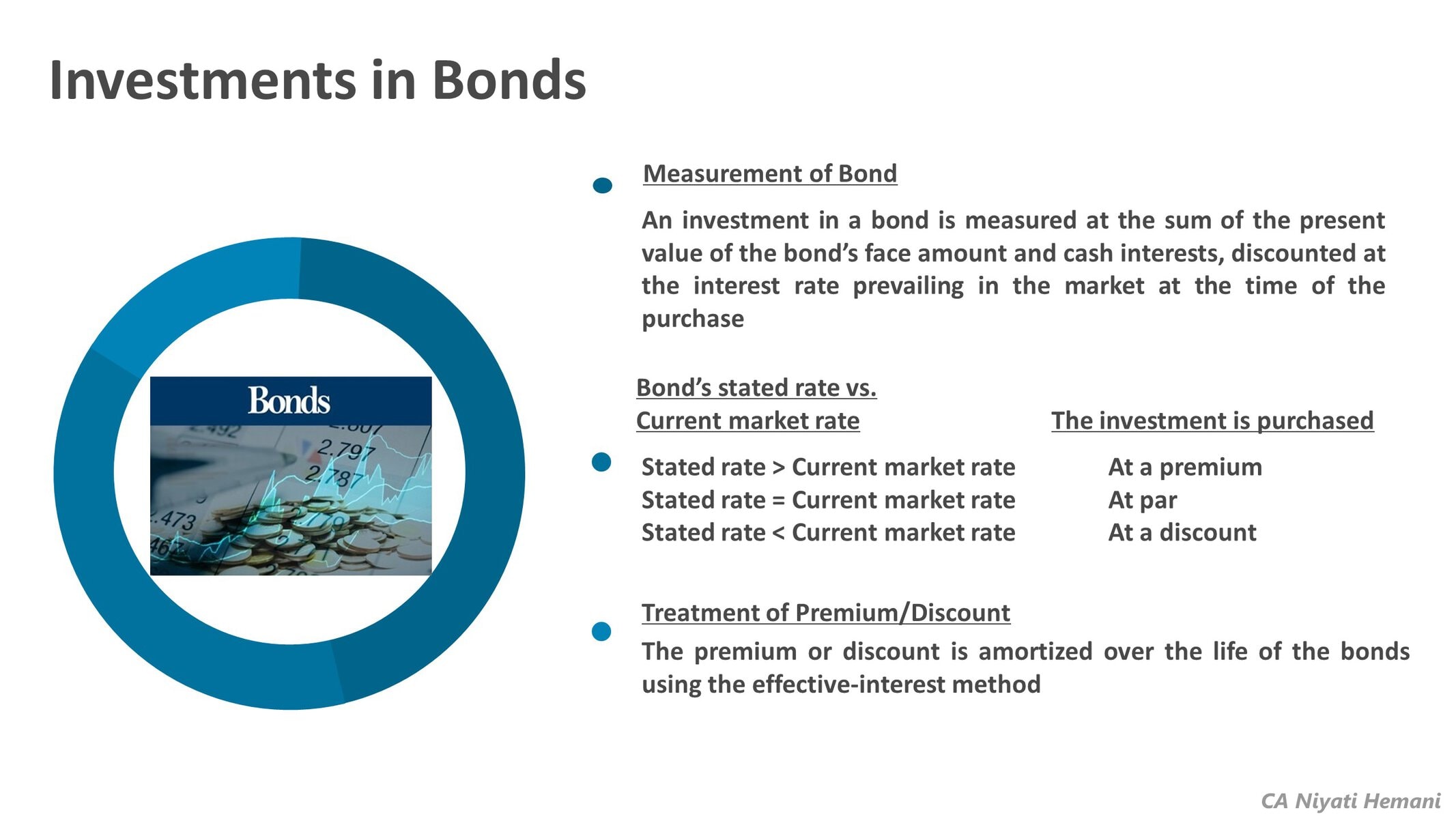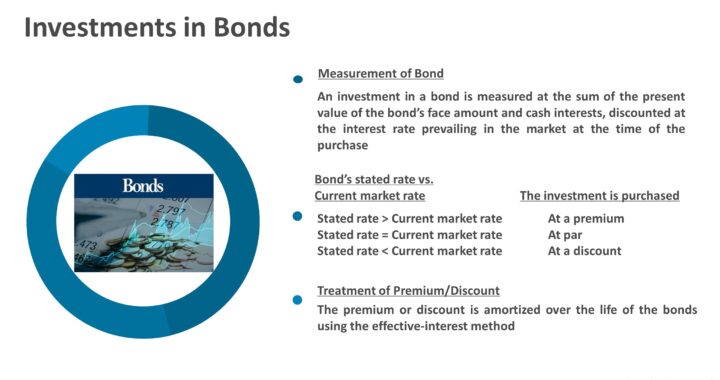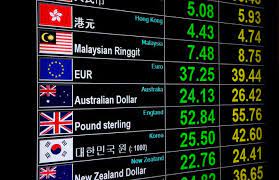
A bond is a formal contractual agreement by an issuer to pay an amount of money (face amount) at the maturity date plus interest at the stated rate at specific intervals. All items are stated in a document called an indenture
The investor in a bond may elect FVO since the bond is a financial asset. Absent this election, a bond is classified as trading, held-to-maturity or available for sale security
Purchase Price
An investment in a bond is recorded on the purchaser's books at the present value of the bond's two cash flows:
- The face amount (maturity amount) receivable on the bond's maturity date, and
- The annual cash interest (i.e. face amount * stated interest rate)
If the bond's stated rate differs from the market rate at the time of the purchase, the price paid will not equal the face amount
a. If the bond's stated rate is greater than the current market rate, the purchase price is higher than the face amount and the bond is purchased at a premium
b. If the bond's state rate is less than the current market rate, the purchase price is lower than the face amount and the bond is purchased at a discount
An investor in bonds does not use a separate premium or discount account. The investor records the investment at historical cost
Purchase between interest payment dates
If the bonds are purchased between interest payment dates, cash paid to the seller includes interest accrued
Accrued interest on the date of purchase since the last payment date should be debited to interest receivable and the balance should be debited to bonds account
Amortizing a Premium or Discount
Held-to-maturity securities (bonds) are recorded at their historical cost (including brokerage fees but excluding accrued interest at purchase)
Any discount or premium (i.e the difference between the purchase price and maturity amount) is amortized over the remaining life of the debt using the effective interest method
Amortization results in the carrying amount of the asset adjusted over time, reaching the face amount at maturity
The straight-line method is used only if its results are not materially different from those of the effective-interest method
Effective Interest Method
Interest method results in a constant rate of return on a receivable
Interest Revenue = Net Book Value * Effective Rate of Interest
The amount of discount or premium amortized is the difference between interest revenue and the actual amount of cash received based on the contract rate of interest
Discount/Premium Amortized = Interest Revenue (NetBook Value*Effective Rate) - Actual amount received at a stated interest
Net Book Value (Carrying Value) of Bond:
- INCREASES as and when the DISCOUNT is amortized
- DECREASES as and when the PREMIUM is amortized
As the carrying value increases or decreases from period to period, the amount of amortization also increases or decreases from period to period
Carrying Amount = Face Value + Unamortized Premium (-) Unamortized Discount
Detachable Warrants
When debt securities with detachable warrants are purchased, the purchase consideration paid should be allocated between the warrants and the securities based upon their relative fair values at issuance
If you have found this blog to be useful, you may share with your friends. Thanks!



